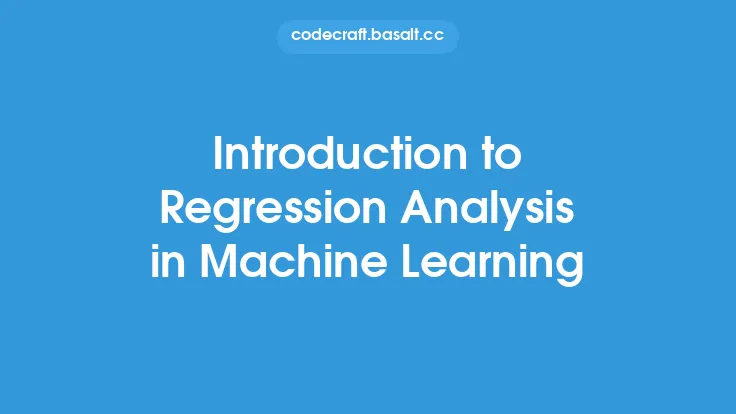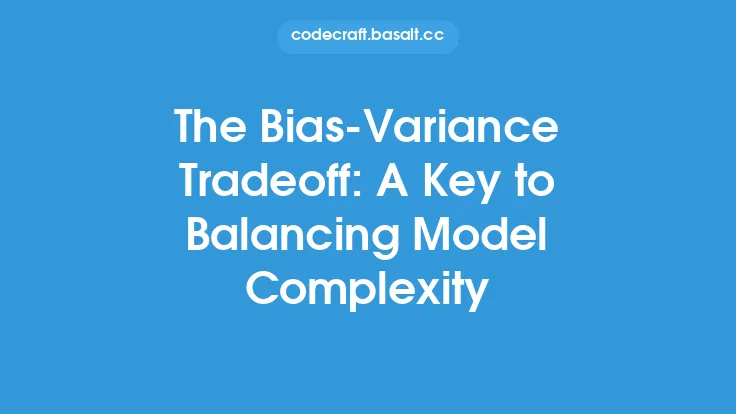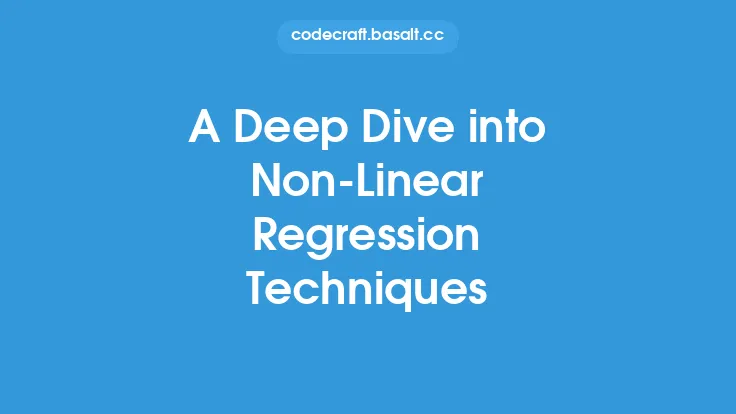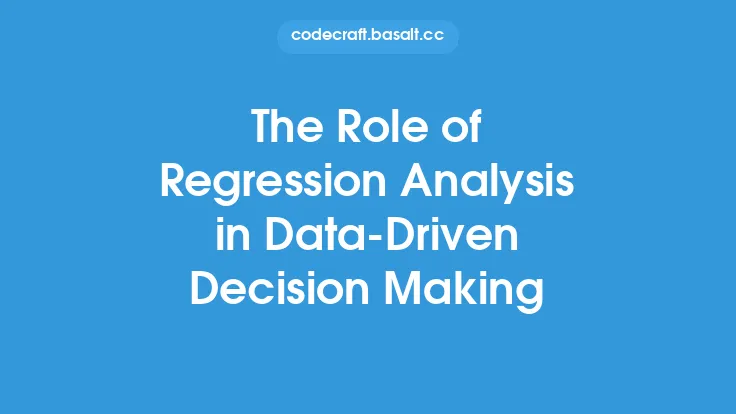Regression analysis is a statistical method used to establish a relationship between two or more variables. In the context of machine learning, it is a supervised learning technique that helps predict the value of a continuous outcome variable based on one or more predictor variables. The goal of regression analysis is to create a mathematical model that can accurately predict the value of the outcome variable for new, unseen data.
Introduction to Regression Models
Regression models are mathematical equations that describe the relationship between the predictor variables and the outcome variable. These models can be simple or complex, depending on the number of predictor variables and the nature of their relationships. Simple regression models involve only one predictor variable, while multiple regression models involve two or more predictor variables. The choice of regression model depends on the research question, the nature of the data, and the level of complexity desired.
Assumptions of Regression Analysis
For regression analysis to be valid, certain assumptions must be met. These assumptions include linearity, independence, homoscedasticity, normality, and no multicollinearity. Linearity assumes that the relationship between the predictor variables and the outcome variable is linear. Independence assumes that each observation is independent of the others. Homoscedasticity assumes that the variance of the residuals is constant across all levels of the predictor variables. Normality assumes that the residuals are normally distributed. Multicollinearity occurs when two or more predictor variables are highly correlated, which can lead to unstable estimates of the regression coefficients.
Types of Regression Analysis
There are several types of regression analysis, including linear regression, non-linear regression, logistic regression, and polynomial regression. Linear regression is the most common type of regression analysis and involves a linear relationship between the predictor variables and the outcome variable. Non-linear regression involves a non-linear relationship between the predictor variables and the outcome variable. Logistic regression is used to predict binary outcomes, such as 0 or 1, yes or no. Polynomial regression involves a non-linear relationship between the predictor variables and the outcome variable, where the predictor variables are raised to a power.
Regression Coefficients
Regression coefficients are the parameters of the regression model that describe the relationship between the predictor variables and the outcome variable. The coefficients represent the change in the outcome variable for a one-unit change in the predictor variable, while holding all other predictor variables constant. The coefficients can be positive or negative, indicating the direction of the relationship. A positive coefficient indicates a positive relationship, while a negative coefficient indicates a negative relationship.
Model Evaluation
Evaluating the performance of a regression model is crucial to ensure that it is accurate and reliable. Common evaluation metrics include mean squared error (MSE), mean absolute error (MAE), R-squared, and coefficient of determination. MSE measures the average squared difference between the predicted and actual values. MAE measures the average absolute difference between the predicted and actual values. R-squared measures the proportion of variance in the outcome variable that is explained by the predictor variables. Coefficient of determination measures the proportion of variance in the outcome variable that is explained by the predictor variables, while also taking into account the number of predictor variables.
Common Applications of Regression Analysis
Regression analysis has numerous applications in various fields, including business, economics, engineering, and social sciences. In business, regression analysis is used to predict sales, revenue, and customer behavior. In economics, regression analysis is used to study the relationship between economic variables, such as GDP, inflation, and unemployment. In engineering, regression analysis is used to optimize system performance and predict outcomes. In social sciences, regression analysis is used to study the relationship between social variables, such as crime rates, education, and income.
Challenges and Limitations of Regression Analysis
Despite its widespread use, regression analysis has several challenges and limitations. One of the main challenges is the assumption of linearity, which may not always hold true. Non-linear relationships can be difficult to model, and the choice of regression model depends on the nature of the data. Another challenge is the presence of multicollinearity, which can lead to unstable estimates of the regression coefficients. Additionally, regression analysis assumes that the data is normally distributed, which may not always be the case. Outliers and missing values can also affect the accuracy of the regression model.
Best Practices for Regression Analysis
To ensure accurate and reliable results, several best practices should be followed when performing regression analysis. These include checking for assumptions, handling missing values, and avoiding multicollinearity. It is also important to evaluate the performance of the regression model using metrics such as MSE, MAE, and R-squared. Additionally, it is essential to interpret the results in the context of the research question and to consider the limitations of the regression model. By following these best practices, regression analysis can be a powerful tool for unlocking insights from data and making informed decisions.
Future Directions of Regression Analysis
Regression analysis is a constantly evolving field, with new techniques and methods being developed to address the challenges and limitations of traditional regression analysis. One of the future directions of regression analysis is the use of machine learning algorithms, such as neural networks and decision trees, to model complex relationships between variables. Another future direction is the use of big data and data mining techniques to analyze large datasets and uncover hidden patterns and relationships. Additionally, the development of new regression models, such as Bayesian regression and robust regression, is expected to improve the accuracy and reliability of regression analysis. As data continues to play an increasingly important role in decision-making, regression analysis is likely to remain a key tool for unlocking insights from data.





